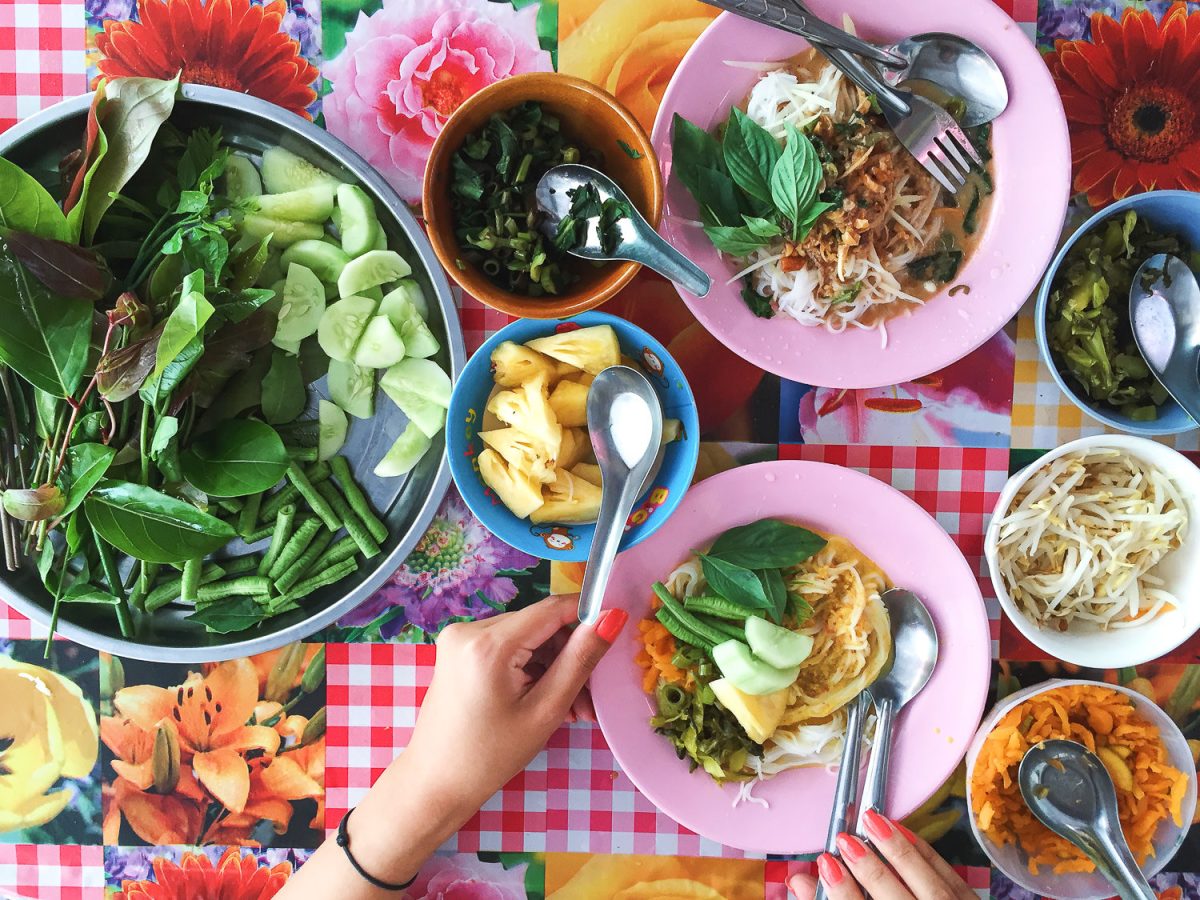Imagine a vibrant tapestry of global flavors, reimagined for the home cook. This exploration dives into the delicious world of vegetarian street food, transforming iconic dishes from bustling markets into delectable meals you can create in your own kitchen. We’ll journey through diverse culinary landscapes, uncovering the secrets to recreating the authentic tastes and textures of globally loved vegetarian street eats, adapting them for ease and accessibility without sacrificing the vibrant cultural heritage they represent.
From the fiery spices of Indian chaat to the savory depth of Mexican esquites, we’ll uncover the unique flavor profiles of various regions and learn how to replicate them using readily available ingredients. We’ll also explore creative makeovers of classic vegetarian dishes, transforming them into portable and exciting street food-style options, perfect for picnics, parties, or a quick and satisfying weeknight meal. Learn essential presentation techniques to elevate your culinary creations and impress your friends and family with visually stunning, flavor-packed vegetarian street food feasts.
Vegetarian Street Food

Vegetarian street food offers a vibrant tapestry of flavors and textures, showcasing the incredible diversity of culinary traditions across the globe. From the fiery spice of Indian chaat to the savory depth of Mexican esquites, these dishes are not only delicious but also reflect the unique agricultural landscapes and cultural heritage of their origins. This exploration delves into regional variations and flavor profiles, highlighting the key ingredients and techniques that make these vegetarian street food gems so captivating.
Regional Variations and Flavor Profiles of Vegetarian Street Food
Three distinct regions—India, Mexico, and Thailand—exemplify the rich diversity of vegetarian street food. Each region boasts a unique culinary landscape shaped by its climate, available ingredients, and cultural practices. These differences translate into distinct flavor profiles that tantalize the taste buds. Indian street food often leans towards a complex blend of spicy, tangy, and savory notes. Mexican street food frequently showcases a balance of savory, slightly sweet, and sometimes smoky flavors. Thai vegetarian street food often presents a harmonious combination of sweet, sour, spicy, and savory elements, creating a delightful symphony of tastes.
Three Vegetarian Street Food Recipes
The following recipes represent the diverse culinary landscapes of India, Mexico, and Thailand, highlighting their unique flavor profiles and ingredients.
- Indian Pani Puri: A burst of tangy, spicy, and refreshing flavors. Imagine a crispy, golden-brown sphere, about an inch in diameter, filled with a vibrant mixture of tamarind chutney (a deep reddish-brown, slightly sweet and tangy sauce), mint-coriander chutney (a bright green, herbaceous paste), and a spiced potato mixture (a golden-brown, slightly crumbly concoction). The contrasting textures – the crisp puri shell yielding to the soft chutneys and potatoes – create a delightful sensory experience. The spices, including cumin, coriander, and chili powder, create a complex aroma that fills the air as you approach a street vendor.
- Mexican Esquites: A savory and slightly sweet corn salad. Picture a vibrant mix of kernels of sweet corn (a bright yellow), creamy mayonnaise (a pale off-white), cotija cheese (a crumbly, white cheese), and a sprinkle of chili powder (a deep reddish-brown). The texture is a delightful combination of sweet, juicy corn, creamy mayonnaise, and crumbly cheese. The aroma is subtly sweet with a hint of smoky chili. The colors are cheerful and bright, inviting the eye to savor this simple yet flavorful dish.
- Thai Mango Sticky Rice: A sweet and subtly savory dessert. Visualize glistening grains of sticky rice (a pearly white, glistening with coconut milk), draped with vibrant slices of ripe mango (a sunny yellow-orange). A rich, creamy coconut milk sauce (a pale, opaque white) coats the rice, adding a touch of sweetness and richness. The textures are a beautiful contrast: the soft, chewy rice against the smooth, juicy mango. The aroma is intensely sweet and fragrant, with hints of coconut and tropical fruits.
Detailed Recipes
- Pani Puri (India):
- Prepare the puri shells: Mix semolina flour, all-purpose flour, and water to form a stiff dough. Roll out small circles and fry until golden brown and crisp. The dough starts as a pale beige, transforming into golden-brown crispy discs.
- Make the potato mixture: Boil potatoes, then mash and mix with cumin, coriander, chili powder, and salt. The potatoes transform from pale ivory to a warm golden brown, infused with spices.
- Prepare chutneys: Blend tamarind pulp with sugar and water for the tamarind chutney. Blend mint, coriander, green chilies, and water for the mint-coriander chutney. The chutneys showcase vivid colors: the tamarind chutney a deep reddish-brown, the mint-coriander a vibrant green.
- Assemble: Fill the puris with the potato mixture, tamarind chutney, and mint-coriander chutney. The final product is a colorful and texturally diverse snack.
- Esquites (Mexico):
- Cook corn: Boil or grill corn until tender. The corn transforms from pale yellow to a richer, brighter yellow.
- Prepare the mixture: Cut the corn kernels off the cob. Mix with mayonnaise, cotija cheese, chili powder, and lime juice. The mixture becomes a creamy, vibrant yellow-orange with white flecks of cheese.
- Serve: Garnish with cilantro and a squeeze of lime juice. The cilantro adds a fresh green accent.
- Mango Sticky Rice (Thailand):
- Cook rice: Rinse sticky rice and cook according to package directions. The rice transforms from dry, opaque grains to soft, glistening, pearly white grains.
- Prepare coconut milk sauce: Combine coconut milk, sugar, and salt in a saucepan. Simmer until thickened. The sauce begins as a pale, opaque white and thickens into a creamy, luscious consistency.
- Assemble: Pour the coconut milk sauce over the cooked sticky rice. Top with fresh mango slices. The final dish is a vibrant contrast of white rice and sunny yellow-orange mango.
This culinary adventure has showcased the incredible versatility and global reach of vegetarian street food. By adapting traditional recipes for home kitchens, we’ve not only celebrated diverse culinary traditions but also demonstrated how simple adjustments can make delicious, globally-inspired vegetarian food accessible to everyone. Whether you’re a seasoned chef or a kitchen novice, these recipes offer a gateway to explore new flavors, experiment with exciting ingredients, and delight in the vibrant world of vegetarian street food, all from the comfort of your own home. The journey of taste and culinary exploration continues—so grab your aprons and get cooking!
Answers to Common Questions
Can I make these recipes gluten-free?
Many of these recipes can be easily adapted to be gluten-free by substituting gluten-containing ingredients (like soy sauce or wheat flour) with gluten-free alternatives (like tamari or gluten-free flour blends).
How can I store leftovers?
Leftovers should be stored in airtight containers in the refrigerator for up to 3-4 days. Reheat gently before serving.
Are these recipes suitable for large groups?
Yes, most of these recipes can be easily scaled up to feed larger groups. Simply multiply the ingredient quantities proportionally.
What if I don’t have all the listed spices?
While the spices are important for authentic flavor, you can often substitute similar spices or omit some if needed. The recipes will still be delicious, though the flavor profile may differ slightly.


